Recreation Faciities
Posted on - Monday, June 24th, 2013There is a new section in the ADA Standards which deals with all types of recreation and sports facilities. Some examples of these are amusement parks, sports like bowling, arcades, swimming pools, mini-golf , and play area just to mention a few.
When designing or building recreational facilities look at ADA sections in the 2010 ADA to look at for scoping are: 226, 227, 234, 235, 236, 237, 239, 240, 242 and 243. ADA sections in the 2010 ADA to look at for technical requirements are: 902, 904 and Chapter 10.
This newsletter will focus on the type of facilities like an all inclusive arcade for children and adults that have bowling, arcades, and other games like laser tag and even rock climbing. These facilities will probably also have dining areas and service areas which have been explained in other newsletters.
Are arcade games required to be accessible?
Only elements in a facility that are “fixed” or “built-in” are subject to the requirements for accessibiltiy under Title III. Furnishings and equipment that are not permanent will not be subject and do not have to comply.
This applies to arcade games such as pinball machines, video games, pool tables, air hockey and the like. In an arcade, the games are not required to be accessible, but an accessible route to them should be provided. This is similar to the requirements in an exercise or fitness room where a route to the equipment and also a clear floor space next to each type of equipment should be provided.
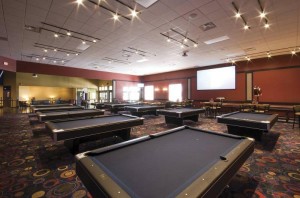
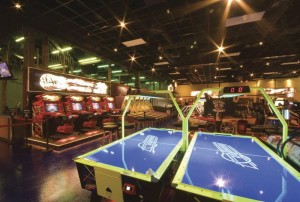
Other games such as laser tag, sand volley-ball, or even rock climbing are considered “area of sport activity”. The areas of sport activity according to the 2010 ADA Standards are exempted from certain requirements, such as changes in level inside the area, type of flooring, and protruding objects within the area. The Standards advises that an accessible route up to the activity be provided. The interior of the court or sport activity area itself is not required to fully comply. Therefore, a route up to the laser tag entrance is required, but the course itself is not required to comply.
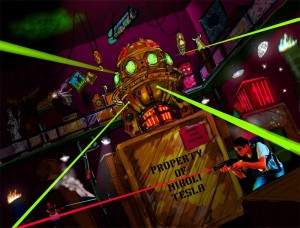
What games in an recreational facility have to be accessible?
Even though most of the games within the recreational facility/arcade might be considered either equipment or areas of sport activity, there are a few type of games that are scoped in the ADA. Some examples are mini-golf, bowling, and play areas (even the elevated play areas found on the interior of some facilities).
Mini-Golf requirements are found in ADA sections 239 and 1007. Some of the requirements are:
a) 50% of the holes should be accessible and consecutive
b) A clear floor space (30″x48″) should be provided at the first hole
c) Areas within holes where golf balls rest shall be within 36″ max of the clear floor space so the golf club can reach it.
d) The accessible route should comply with all the requirements of the accessible route chapters, but there are some exceptions which readers should be aware of.
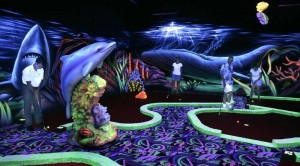
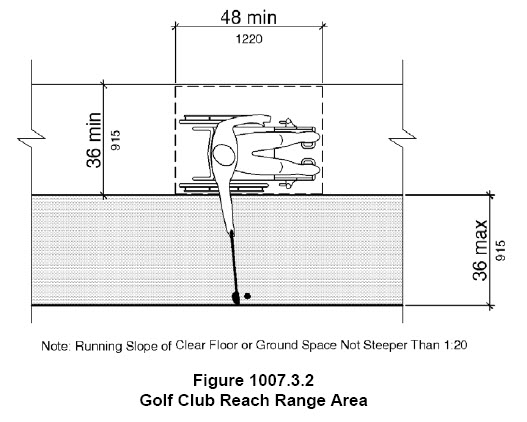
Bowling alleys are not excempted and are subject. Section 206.2.11 states “Where bowling lanes are provided, at least 5% but no fewer than one of each type of bowling lane, shall be on an accessible route”
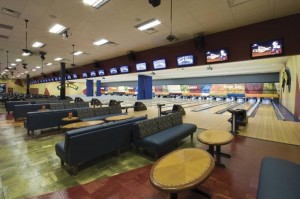
Soft contained play structures are also scoped and are required to comply. Section 206.2.17.2 states that at least one entry point shall be located on an accessible route. Where four or more entry points are provided for soft contained play structures, at least two entry points shall be on an accessible route.

What’s new?
TDLR just issued 9 new Technical Memoradum that explain the vague areas of the Standards. These only apply to the Texas Accessibilty Standards, but might be useful in other States, when they are clarifying technical standards that are also found in the 2010 ADA Standards chapters 3-10. These are only clarifications and do not constitute a change to the compliance requirements. Here is the list:
TM 2013-10 Clustered Toilet Rooms. 2012 TAS Reference 213.2 Exception #4
TM 2013-11 Benches. 2012 TAS Reference 903
TM 2013-12 Number of Accessible elements. 2012 TAS Reference 201.1
TM 2013-13 Housing at Places of Education. 2012 TAS Reference 224.6
TM 2013-14 Dining Surfaces. 2012 TAS Reference 226 and 902
TM 2013-15 Baby Changing Tables. 2012 TAS Reference 902
TM 2013-16 Residential Amenity Centers. 2012 TAS Reference 68.30 (5)
TM 2013-17 Water Closet Clearance-Overlap. 2012 TAS Reference 604.3.2
TM 2013-18 Sinks. 2012 TAS Reference 212.3 and 804.4
Upcoming Continuing Education Opportunities
Below are some upcoming seminars where I’ll be teaching for AIA approved CEU:
June 13th: 4 hr Understanding the 2010 ADA for SSTL Code– Class is Full but check for other dates on her website
June 20th: AIA National convention in Denver, Colorado: “TH315 Building Leaders Creating True Sustainable Environments: How the ADA and LEED work together”
August 15: Metrocon13 in Dallas Texas: “Applying the ADA in Interiors Spaces” Two sessions one at 12:30 and one at 2:00
November 7: TSA Convention in Ft. Worth
Announcing the release of our second book: “Applying the ADA” published by Wiley. It is available for sale now. . Congratulations to Daniel Steenstra from HGA Mid-Atlantic LLC in Alexandria Virginia who won a copy of my book in honor of Architecture Month in April!
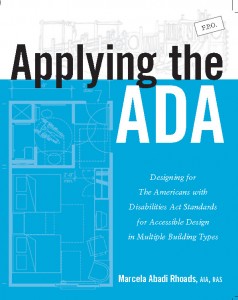
If you want to learn more about the new Standards, The ADA Companion Guide explains the 2004 ADAAG Guidelines with commentary and explanations throughout. The 2004 Guidelines were adopted by the DOJ to create the 2010 Standards and by Texas to create the 2012 TAS. This book explains the technical requirements for both.
Abadi Accessibility
 Abadi
Abadi 
